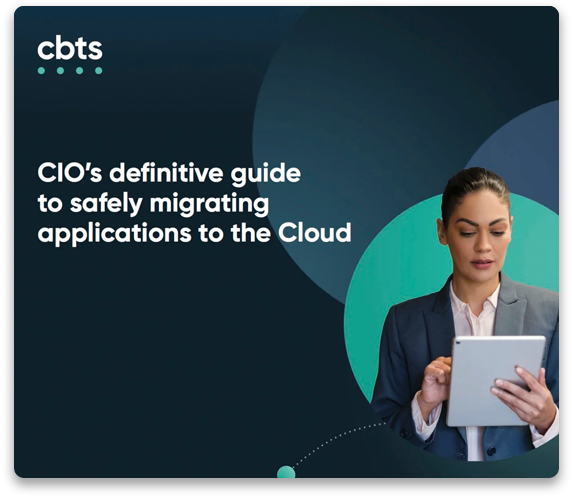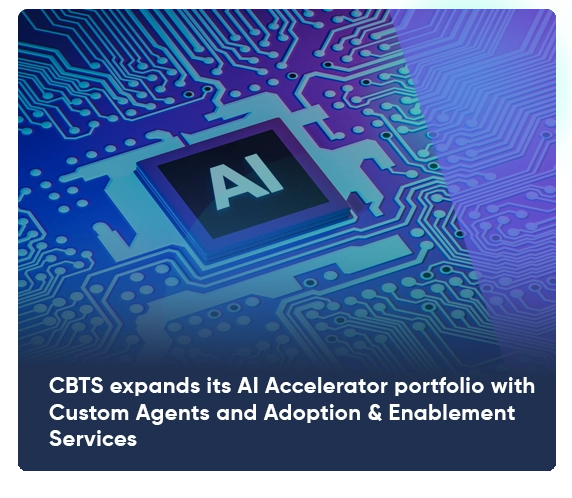
AI continues to grow into a pillar of modern business technology, developing from a crucial competitive advantage into a necessary operating tool. As it does, it is reshaping the demands enterprises place on their network architectures and security strategy.
AI transmits unprecedented amounts of data across network infrastructure, much of which is privileged. To maintain smooth operations, enterprises must find a way to not only support these transfers but defend them against a new generation of cyberthreats.
Contemporary security platforms are already addressing the challenges of high-bandwidth communication and a sophisticated threat landscape. But technology is in a period of rapid evolution, and as it relates to cybersecurity, standing still means falling behind. Below, explore the current state of affairs in network security, the rising threats on the horizon, and what networking providers are doing to adapt.
Read more: Bandwidth, sustainability, and security: Addressing top networking concerns for AI implementation
Essential security responses to contemporary network threats
The nature of network and security threats has shifted dramatically in the last decade, and technology has been quick to respond. As computing environments have grown more distributed, with enterprises increasingly global and more employees working from home, legacy network architectures have struggled to protect data while maintaining a seamless experience.
Sensitive traffic is vulnerable in transit, and endpoints like personal computers and tablets are often unmanaged by any centralized enterprise security policy. Moreover, legacy security options like VPNs can prove cumbersome, leading employees to work around them and jeopardizing compliance.
Next-generation network solutions address these hurdles by decoupling network architecture from physical infrastructure, allowing more robust data protection regardless of user location. Software-defined wide area network (SD-WAN) architectures empower organizations of any size to extend enterprise-caliber protections to the service edge and create a flexible, secure, and enhanced employee experience.
A modernized network architecture further unlocks improved security capabilities such as::
- Zero-trust networking: These guiding principles emphasize continuous verification of user identity and behavior alongside expectations of minimum essential access to enterprise resources.
- AI-enhanced security processes: Thoroughly trained AI agents can support IT staff with intelligent threat assessment and notifications, proactive incident response, and suggestions to optimize performance.
- Cloud-native security solutions: Tools like cloud access security brokers (CASBs) extend enterprise security functions into cloud resources, providing essential visibility and control as reliance on the Cloud grows.
Comprehensive protection for the service edge
With a raft of critical new tools for contemporary network security, organizations taking a piecemeal approach can quickly be overwhelmed. Providers are consolidating modern security functions into secure access service edge platforms, or SASE, to address the issue. These holistic network management and security solutions streamline the complex process of securing an enterprise network and lay the foundation for addressing emerging threats as well.
For example, the latest generation of Prisma SASE from Palo Alto Networks addresses evolving risks to enterprise AI models and provides AI-enhanced end-user protections and data loss prevention features.
Read more: Palo Alto Networks Prisma SASE: Bolstering network resilience in the era of AI
As the landscape evolves, so do security strategies
The only constant in the world of network security is change—so while available solutions have already adapted to a radically different threat landscape, the dangers are once again shifting.
Looking ahead, new risks loom on the horizon for organizations large and small. Additionally, enterprises that have not yet modernized their network security architectures will find it increasingly difficult to catch up as time goes on.
These threats, and the responses to them, fall into several broad categories:
1. Multi-pronged attacks
In response to improved defenses, breach attempts will grow more sophisticated, employing a range of coordinated tactics in multiple stages to force an opening. A siloed security apparatus might be equipped to defend cloud services, user endpoints, or network access individually, but simultaneous attacks can misdirect and overwhelm.
A consolidated, intelligent security solution, with complete visibility across the enterprise network, can respond holistically to these sophisticated threats—hence the rise in comprehensive, single-vendor security platforms. These platforms unify threat intelligence and response, allowing for the identification of coordinated attacks and the mounting of a multi-layered defense that leverages redundancy to mitigate the impact of any individual vulnerability.
2. Edge computing
As 5G networks grow and Internet of Things (IoT) implementations increase, more enterprise computing migrates to the network’s service edge, handled by client machines near the point of use (rather than transmitted to the network core). This shift heightens the risk associated with endpoint vulnerabilities, as more (and more sensitive) data resides on distributed machines with elevated privileges.
To combat the threat, enterprise networks require advanced endpoint protection, network monitoring, and threat detection capabilities to spot and quarantine risks as soon as they arise. The scale and complexity of modern networking make this challenge well-suited for AI assistance, as AI processes can ingest and interpret enormous amounts of network traffic detail rapidly and produce context-aware responses.
3. AI-related vulnerabilities
While AI is a critical asset for enhanced security, its growth also uncovers new attack surfaces and vectors. Large language models can generate highly realistic, increasingly convincing social-engineering attacks, requiring robust employee training and context-aware automated protections to resist. At the same time, enterprise AI models are at risk for AI-oriented attacks, such as prompt injection, model manipulation, and data poisoning, which degrade performance and induce unexpected behaviors.
The latest generation of network security platforms considers these vulnerabilities, introducing tools to protect the modern enterprise network environment and its AI resources. Model scanning tools and security posture management capabilities in platforms like Palo Alto Networks Prisma AIRS create a secure environment for continued enterprise AI development.
Face the future of cybersecurity head-on with support from CBTS
Enterprise networks are only growing more complex, as are the threats that target them. At the same time, AI enhances both the risk landscape and the security operations designed to defend against it. As networking and security evolve and intersect, enterprises of every scale require expert guidance to navigate the changes and protect their most valuable data assets.
CBTS draws on a long history of technical excellence to provide custom-engineered, future-proof networking solutions that match your unique business needs. Vendors recognize CBTS as an exceptional solutions provider and partner delivering innovative technology strategies that do more than protect—they position clients for long-term success. Contact CBTS today to begin engineering your holistic network and security strategy.





















